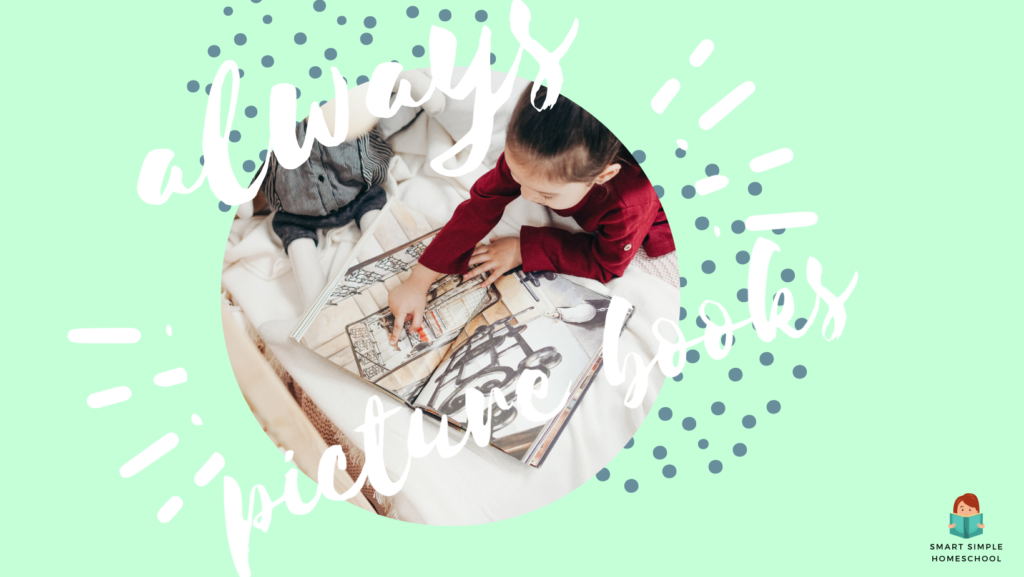
There is a gigantic transition between learning to read and reading to learn. To successfully navigate this transition there are a multitude of strategies that children need to understand and use without prompting. Most people eventually manage to pick up the necessary skills to become people who read to learn but often times, it is a long and frustrating process.
What if there was a better way? Because there is.
What if there was a simple and fun way to learn these strategies? Because there is.
What if I told you the key was picture books? WAIT WHAT!?!
It’s true! Whether your child is five or fifteen or any age in between the simplest and most effective way to teach deep comprehension and critical reading skills is to use picture books for strategy learning and strengthening lessons. Picture books allow the learner to read the entire story in one sitting which increases the opportunities to actually use the focus skill. Longer books have complex structures that inhibit the reader from focusing on the skills because more effort is required to track the structure. Picture books are designed to pack elements into a small number of pages. Longer books have a large number of pages in between obvious places for strategy use. Picture books allow for extra brain space because the pictures support the words. Longer books are text heavy and therefore require increased focus and attention taking away from the ability pay attention to the meta-cognition – thinking about thinking – that is required when acquiring new strategies. Picture books are short and non-threatening. Longer books can be overwhelming by their shear size or tiny font.
Now before you decide that there is no way you can find a picture book that will interest your upper elementary or teen aged learner, I ask you to consider many of the works of Eve Bunting and the satirical work of Dr. Seuss. These books though written in picture book form have weighty subjects and incredible thought provoking structure. Picture books come in an incredible variety of topics and text difficulty. Once you begin looking, I have no doubt that you will be amazed at the variety available to you.
So, once you find a book to start with, what do you do? Just cut them loose? You could. But I’ve found that it is best to walk through the book with your child modeling the strategy in the beginning. Then, over the next few days, continue to read a variety of picture books stopping at strategic places to have your child use the strategy. We spend about a week on each strategy and then circle back to the beginning every 9 or 10 weeks. The strategies we circle through include schema activation, predicting, visualizing, connecting, questioning, inferring, main idea, summarizing and evaluating. If you want to learn more about teaching these strategies, I highly recommend you join our FREE Facebook Community Kick the Curriculum: Confidently Teach Reading with Any Book. In the Facebook group, we share book recommendations as well as prompts and thought patterns to help as you gain confidence in exploring the thinking about thinking that is required to truly become a great reader and teach your children to be great readers.
I love the advantages of using picture books as a means of teaching and strengthening comprehension and critical reading skills. Always using picture books is how we keep it smart and keep it simple.
Recent Comments